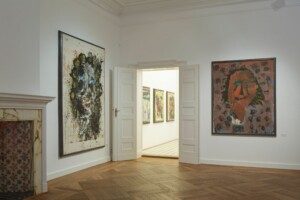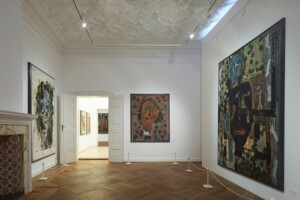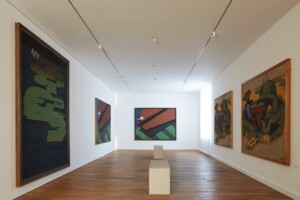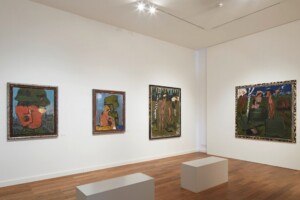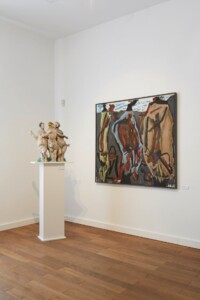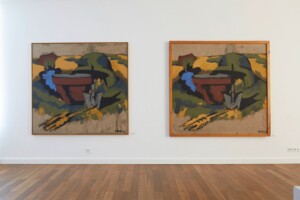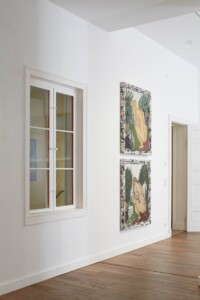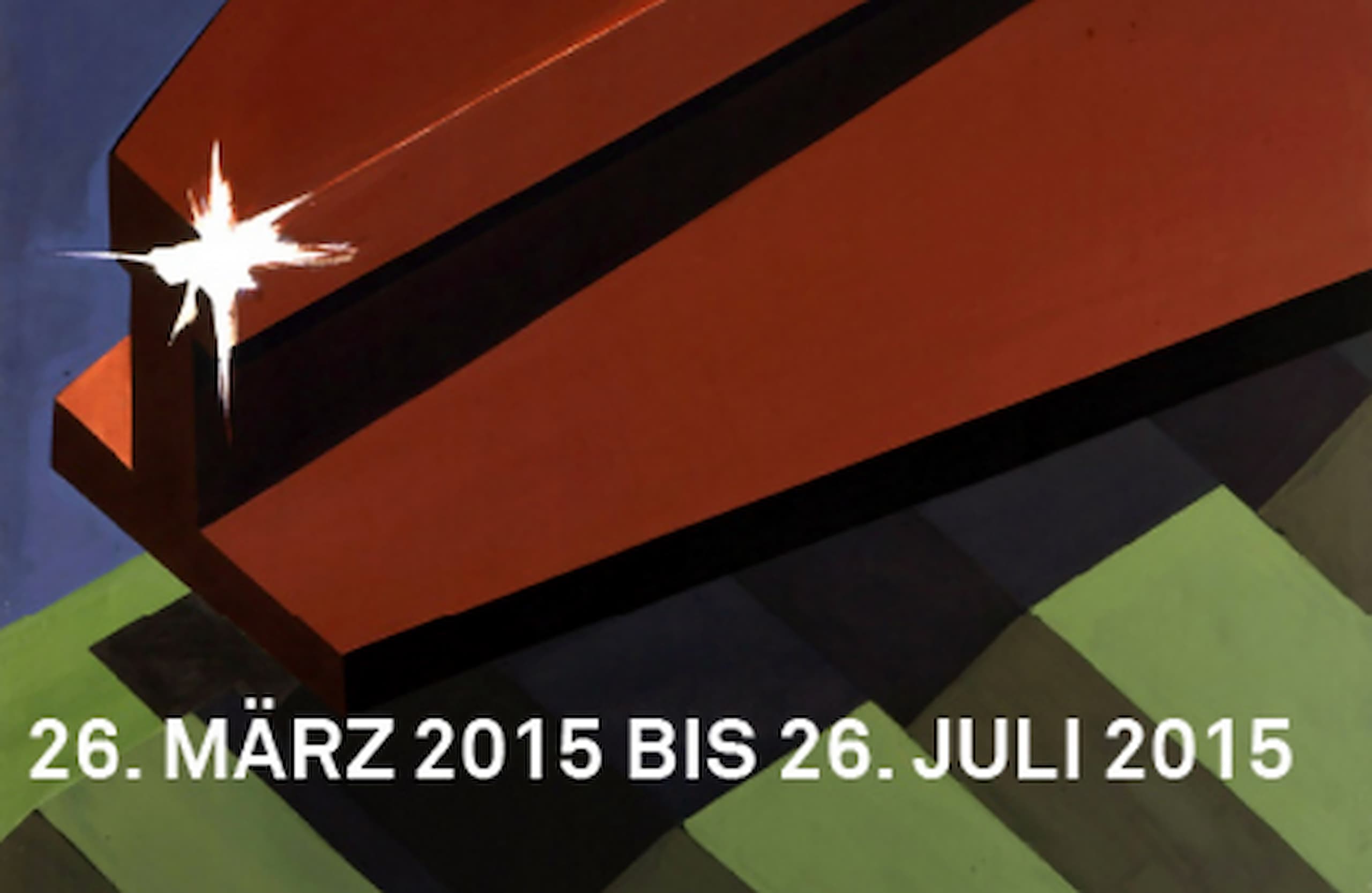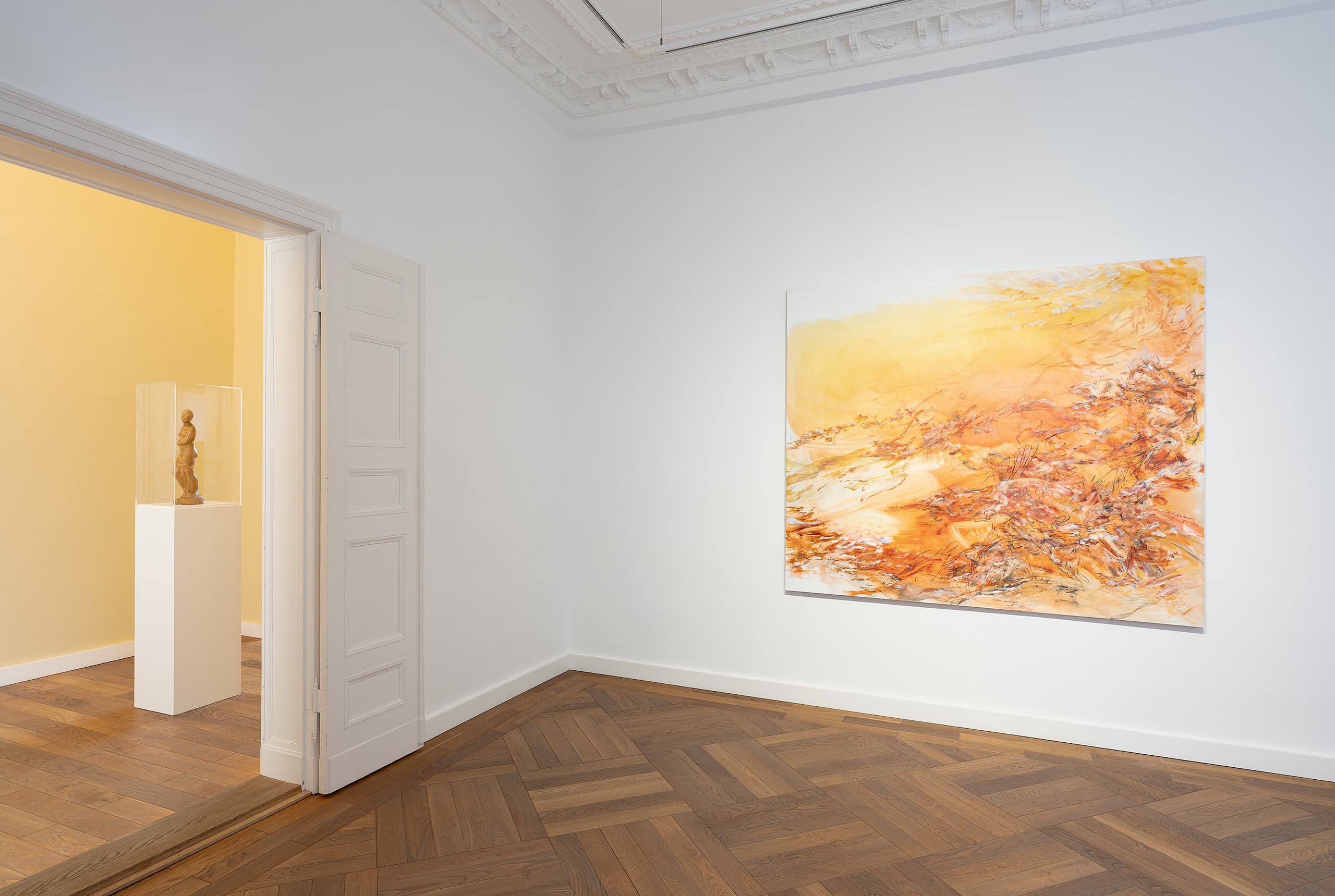Markus Lüpertz
The Villa Schöningen presents an exhibition by the German artist Markus Lüpertz (*1941) from March 26 to July 27, 2015. This retrospective exhibition features over 60 paintings and seven sculptures, illustrating Markus Lüpertz’s artistic journey from 1966 to 2014.
In the early 1960s, Markus Lüpertz distinguished himself from post-war Germany’s informal painting with his dynamic and figurative style. Especially with his “dithyrambic” works, Lüpertz positioned himself as one of the artists working on the realignment of German painting. By using “dithyrambic” (Dithyrambos = hymn to the Greek god Dionysus), Lüpertz underscores the sensual demand of his painting, as well as the desire for renewal. The significance of this aspect is evident in the fact that the works of this period have the word in the title (e.g., “Baumstamm – dithyrambic,” 1966; “Deutsches Motiv – dithyrambic,” 1972).
In his exploration of German history, Lüpertz, in the 1970s following Joseph Beuys, dared to depict symbolic motifs such as steel helmets, military caps, and emblems misused by the Nazis on a large scale, pointing to an unresolved past.
One of Lüpertz’s most famous works is the series “Männer ohne Frauen. Parsival” (1994), whose title refers to Ernest Hemingway’s short stories and Wagner’s opera “Parsifal.”
The central theme of this series is the human face in its most general form, as the motifs have nothing portrait-like or representational about them. They only come to life through the artist’s application of color. Hemingway’s stories are about men seeking challenges that they confront with self-assertion but ultimately fail. Their relationships with women, who remain foreign to them, also fail due to the impossibility of genuine understanding. In contrast, the legend of Parsifal glorifies sexual abstinence in favor of divine fulfillment. These references represent two different life concepts, between which Lüpertz moves in this series like between two opposing poles.
Greek mythology has been one of the main sources of inspiration in Markus Lüpertz’s art for years. His exploration of classical themes continues to this day. His “Drei Grazien” from 1984 (oil on canvas) and the color-painted bronze sculpture “3 Grazien” (2000), shown at Villa Schöningen, deviate from the classical ideal of beauty and provide a reinterpretation of a theme that has traversed all centuries of art history.
In the six works of the series “Rückenakte,” the artist engages with a classic theme in visual art. However, for Lüpertz, this motif serves as a starting point to challenge himself and painting. Expectations and viewing levels are not simply catered to but questioned. The “Rückenakte” show only fragments of the body. The figure is taken out of its familiar context of meaning, revealing new levels of perception. The body serves merely as a form that Markus Lüpertz uses to compose his powerful, impulsive, rhythmic painting.
Markus Lüpertz, one of the most significant contemporary German artists, was born in Liberec, Bohemia, in 1941. After his family fled to the West, he later studied at the Werkkunstschule in Krefeld and the Kunstakademie in Düsseldorf. From 1988 to 2009, he served as the rector of the Kunstakademie Düsseldorf. He has received the Villa Romana Prize, the Prize of the German Critics’ Association, and the Julio Gonzalez Prize.
Markus Lüpertz’s work is exhibited worldwide, including solo exhibitions at the Albertina in Vienna, the Stedelijk Museum in Amsterdam, the Museo Nacional Centro de Arte Reina Sofia in Madrid, the Beijing Art Museum of Imperial City in Beijing, and the Museum Ludwig in Cologne. In 2009, the Art and Exhibition Hall of the Federal Republic of Germany in Bonn dedicated an extensive retrospective to him.
The artist currently lives and works in Berlin, Düsseldorf, and Karlsruhe.
 © Villa Schöningen
© Villa Schöningen
 © Villa Schöningen
© Villa Schöningen
 © Villa Schöningen
© Villa Schöningen
 © Villa Schöningen
© Villa Schöningen
 © Villa Schöningen
© Villa Schöningen
 © Villa Schöningen
© Villa Schöningen
 © Villa Schöningen
© Villa Schöningen
 © Villa Schöningen
© Villa Schöningen
 © Villa Schöningen
© Villa Schöningen
 © Villa Schöningen
© Villa Schöningen
 © Villa Schöningen
© Villa Schöningen

